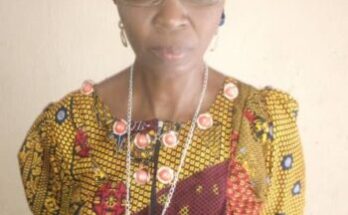Godwin Emefiele is an incurable optimist. The governor of Central Bank of Nigeria (CBN) has set for Nigeria’s banking system a rather ambitious target on the thorny issue of financial inclusion. Emefiele wants 80 per cent of Nigerian adults to own bank accounts by 2020. The CBN governor argued that only 50 per cent of Nigerian adults are currently in the banking network.
Recent statistics from the banking system put a huge question mark on Emefiele’s assertion. By December 31, 2016, there were 84.5 million accounts in the nation’s deposit money banks (DMBs). The 84.5 million accounts were owned by about 35 million individuals and corporate bodies.
The 2006 population census projection was that there would be 98.9 million adults in Nigeria by 2012. Based on that projection, the adult population of Nigeria should be well over 100 million now. However, for the purpose of this discussion, one would put Nigeria’s adult population at 98.9 million. Simple arithmetic shows that 50 per cent or half of that figure is 49.45 million. Even at the best of times, the number of individual account holders in Nigerian banks has never crossed the 40 million mark. In fact, the emergence of the bank verification number (BVN) has even worsened what has been a bad situation.
On April 2017, statistics from the banking industry showed that BVN had knocked off six million account holders from the banking system. The data showed that only 29 million individual account holders were captured by BVN.
Besides, out of the 84.5 million accounts in all the DMBs in Nigeria at the close of business in December 31, 2016, only 46 million were captured in April 2017 by BVN. In other words, BVN knocked off close to 38 million accounts from the system. Some six million account holders could not lay claims to 38 million accounts in the banking system. The money trapped in the 38 million accounts was in the range of N2 trillion. BVN has kept the N2 trillion out of the reach of their owners though banks are still trading on them surreptitiously. From all indications, Emefiele’s claim of 50 per cent financial inclusion is questionable.
Even more questionable is the target of reaching 80 per cent financial inclusion by the magic year 2020. That is the year Nigeria hopes to join the exclusive club of the 20 largest economies in the world. With 2020 just a scant three years away, it looks increasingly elusive for Africa’s largest economy to hit that target.
Now the CBN governor has set yet another seemingly elusive target. The infrastructure on ground is appallingly inadequate to sustain the drive to attain the target. Emefiele’s worry about the country’s low financial inclusion is understandable. At the moment, there is more money under people’s pillows and other unholy vaults than there is in the banking system. That simply makes liquidity management a Herculean task. When the CBN mops up liquidity in the banking system with the hope of curtailing inflation, it ends up hiking the cost of funds in the system while the excess funds outside the banking system joins the hike in the cost of funds to escalate inflation.
Besides, there is a direct relationship between poverty and financial exclusion. Most of Nigeria’s 110 million people toiling below poverty line have no access to banking services. They cannot raise micro-credits as low as N5, 000 to start the business of selling recharge cards. That handicap keeps them perpetually in poverty.
The fight against poverty therefore begins with aggressive pursuit of financial inclusion. Unfortunately, Emefiele’s ambitious target is not the solution. Right now banking services in Nigeria is practically restricted to the urban areas. Ibiono-Ibom local government area in Akwa Ibom State is a classic example.
There is electricity in at least 90 per cent of the local government area. There is GSM telephone networks in all the villages in the local government. Ironically, there is not even a banking cash office in the whole LGA. The nearest bank branch to the headquarters of the LGA is some 30 kilometers away in Uyo. There are hundreds of LGAs in Nigeria that are deprived of banking services like Ibiono Ibom.
Emefiele’s ambitious 80 per cent financial inclusion target for 2020 must therefore start with an aggressive campaign for rural banking. There are stacks of naira notes stashed away in homes in rural Nigeria. The CBN should compel banks to open at least a cash office in each of the 774 local government headquarters.
The situation is so bad that the banks have developed queasiness for rural Nigeria. Ishiet Market on the outskirts of Uyo is a booming fish market located in a village by the seashore. Fishermen from fishing ports sell dried fish and crayfish in the market. A conservative estimate of daily transactions in the market is N10 million. Ironically, there is not even a bank cash office in the market.
Besides, the CBN ambitious financial inclusion target must address the sensitive issue of deposit rates. Banks must be compelled to pay deposit rates that would encourage people to drop their money with them. Current deposit rates for the lower end of the market borders on deprivation.



